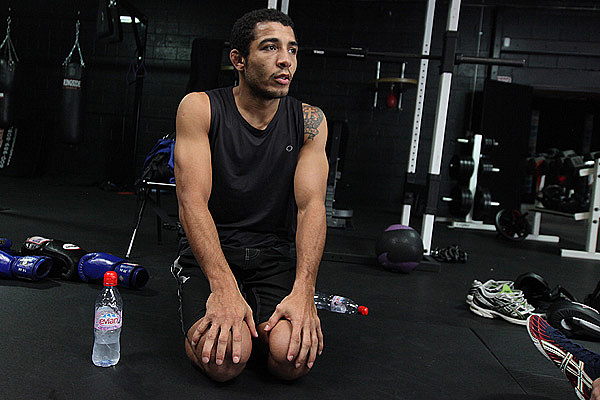Picking MMA’s Youth Movement
Jason Probst Mar 11, 2011

Don’t bet against MMA athlete 3.0. | Jose Aldo file photo: Dave
Mandel/Sherdog.com
As part of my regular assignments covering MMA, I do an event preview with fight picks. What I have noticed is how the game seems to be trending toward younger fighters, and how the latest wave threatens to displace the old guard of veterans.
It felt odd picking Danny Castillo over Joe Stevenson on the UFC Live 3 card. As someone intimately familiar with both fighters’ careers, Stevenson seemed a slight favorite. Yet the bout played out exactly as I thought it would. The same was true in choosing Chris Weidman over Alessio Sakara.
Advertisement
As MMA moves toward the completion of its second decade, the evolution curve of today’s fighter is markedly different than that of five or six years ago. Fighters are starting younger than ever and, perhaps as importantly, are often aware of MMA in grade school or high school.
In referencing these phases, one can group fighters into eras, akin
to software versions. Royce Gracie
was MMA version 1.0. Frank
Shamrock, Randy
Couture, Tito Ortiz and
Matt
Hughes were version 2.0. The Georges
St. Pierre and Anderson
Silva types are version 3.0. Each succeeding version gained
something the previous one lacked.
Version 1.0 is definitively the old guard, and they are essentially retired right now, or should be. Versed primarily in one skill, it is exceptionally difficult for them to compete at the world-class level, as it mostly has been for the past decade.
Version 2.0’s group is aging, in their mid- to late-30s, if not older. Once dominant, often via a wrestling base, the success of their game in recent years has readily depended on integrating new skills into MMA.
Version 2.0 is also at the point where injuries do not heal the way they used to, and long-running physical ailments manifest themselves in virtually every fight. Shot knees, blown backs, endless variations on the price the game extracts -- what were once minor irritations are now constant barriers. As usual, Couture is the glaring exception to this rule, mainly because “The Natural” has constantly adapted his game to fit the challenges at hand.
Version 3.0 -- which also includes the likes of B.J. Penn and Jose Aldo -- are still young enough to keep elite skills sharp, while rounding out areas that need improvement.
In a string of recent matches pitting fighters on the ascent against established foes, the ascendant fighters have proven a boon at the betting window.
Fights that fit into this definition include the following, with betting odds listed. The “plus” number is what one would win by betting $100 on the fighter, while the “minus” is how much one would have to put up in order to get back $100.
Cain Velasquez KO1 Antonio Rodrigo Nogueira (-130/+110)
Brendan Schaub DEC Gabriel Gonzaga (+135/-160)
Danny Castillo DEC Joe Stevenson (-130/even)
In each of these fights, the younger competitor showed marked improvement over past performances, while the veteran did not.
Of course, I have had many predictions go wrong and will continue to do so. Such are the hazards of picking fights. But the “young and improving” theory is becoming a bankable ace in my deck.
Related Articles






